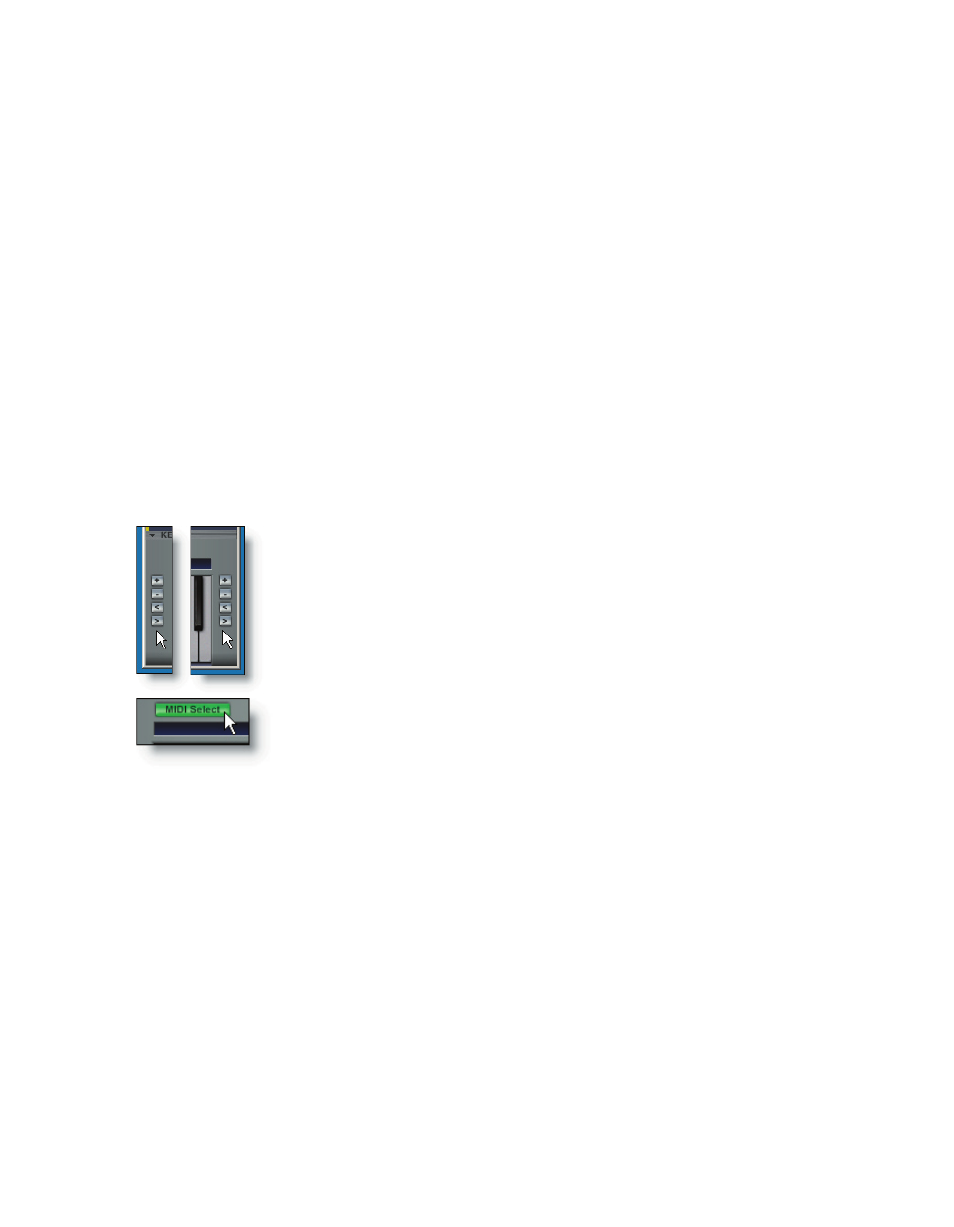Teac GigaStudio 3 User Manual
Page 95

94
95
In the Keyboard view, we can observe several of the loaded instrument properties:
• The range of the instrument is laid out in the white keys. The lowest note region is
selected and is yellow. The octave numbers label each C note. We can see that the violin
section has a range from G2-D6.
• There are special green keyswitch dimension keys at the left in of the keyboard,
with the lowest dimension key selected. A black dot on the key indicates the selection.
We can see that the violin section has a keyswitch range of C0-G0.
• Above the keys are region selection indicators. For each note selected, a correspond-
ing region indicator will turn yellow. Any edits performed in QuickEdit will only affect
selected regions and splits (sub-regions).
• Keyboard Select is set to ‘individual regions’ (default).
• Dimension Select is set to ‘individual splits’ (default).
• The default velocity for mouse-triggered notes is 100 (default).
Any or all of the properties can be changed as well as manipulating the view of the
keyboard itself.
Some basic controls in this view are zoom (+ / -) buttons and scroll
(< / >) buttons at both ends of the keyboard window allowing you to
resize the keys and adjust the range of the notes displayed within it.
The MIDI Select button, when activated (green), places the keyboard
in Midi Select mode which allows you to select note regions as well as
individual splits within those regions from a MIDI source such as your
controller keyboard or sequencer.
We will explore the functions of the keyboard further when we begin to make some
basic edits. For now, we need to be able to interpret what the rest of the QuickEdit pa-
rameters mean, how we can adjust them, and which note regions and splits will be af-
fected by those edits.
With regard to an instrument’s articulation (the manner in which the sampler plays
a sample), there are parameters organized into sections in the Articulation view located
at the top of the QuickSound window. Each section has its own set of parameters and
the default settings reflect the state of the loaded instrument. If you have edited an
instrument in QuickEdit and loaded its performance file (.GSP), then the settings of the
parameters will reflect those of the last saved state of that performance.